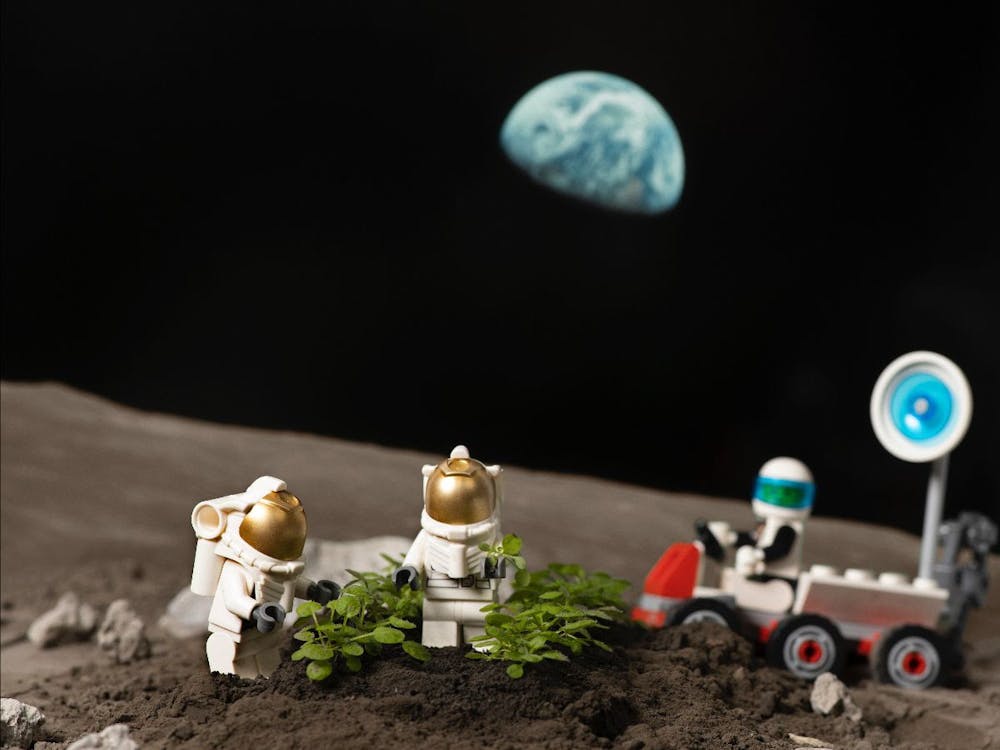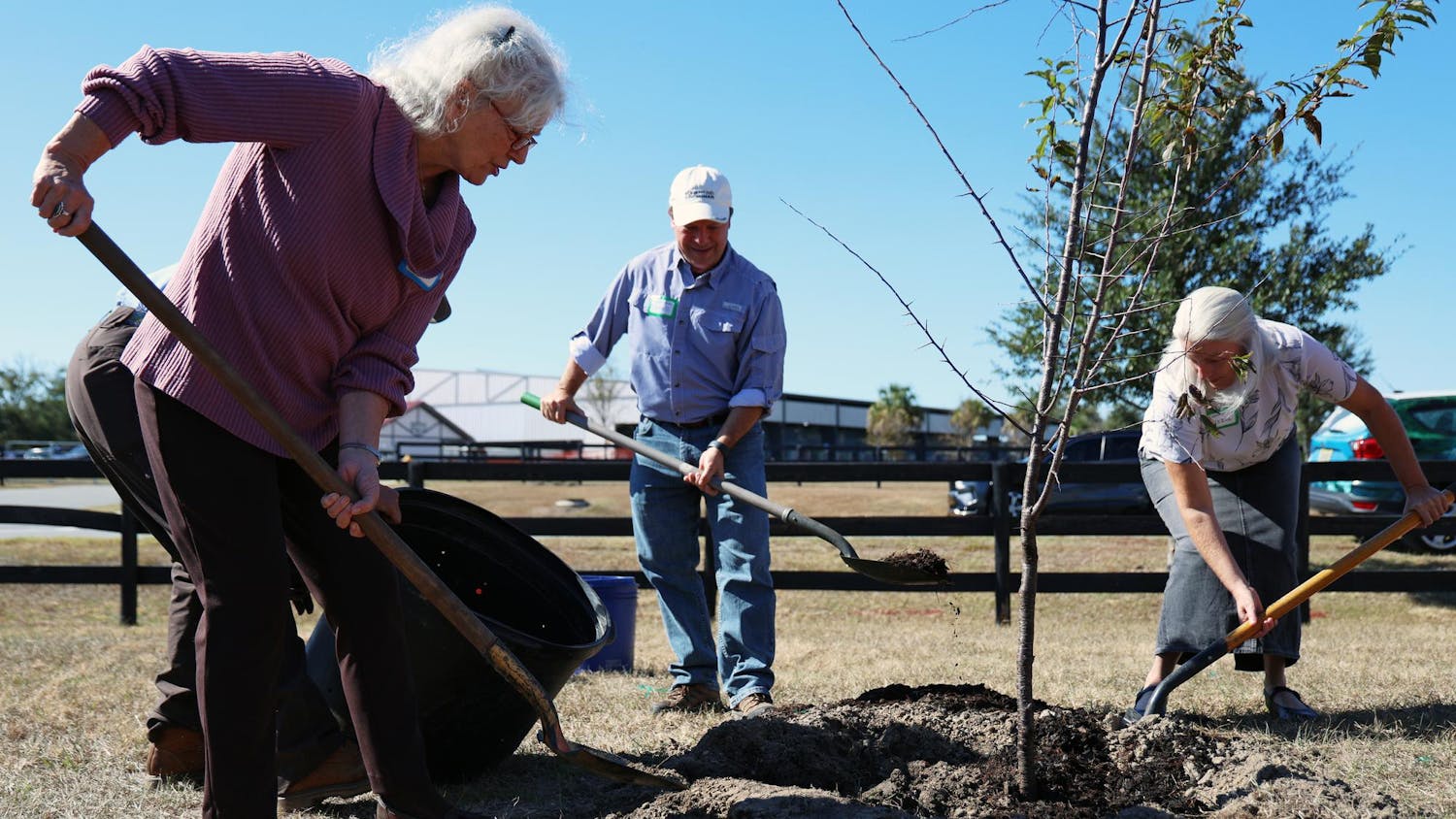Humans are the only living beings who have touched the moon. After UF Institute of Food and Agricultural Sciences’ most recent lunar experiment, plants may be next.
UF researchers published their findings about the growth of plants in lunar soil May 12. They obtained the soil for the experiment from NASA in November 2020, making them the first to grow terrestrial plants in substrate collected from the moon’s surface.
Anna-Lisa Paul and Rob Ferl’s, IFAS researchers and professors, findings will pave the way to longer self-sustained survival in space exploration; the access to plants as a food source would provide a more realistic way for astronauts to sustain themselves in space.
UF researchers now want to know how lunar soil reacts after being exposed to conditions on Earth and how a new generation of plants will react after plants have already grown in it, Paul said.
Graduate and undergraduate students can work with the UF Space Plants lab to send specimens to space, IFAS Public Relations specialist Samantha Murray said, but no students worked on the lunar soil experiment with the researchers.
UF is working with plants in many advanced ways. IFAS is currently researching a way to use Artificial Intelligence to assist plant breeders and farmers, as well as assess plant stressors. This process creates crop models that use data to assess the circumstances, like soil and temperature, that will make the best crops.
Dr. Robert Gilbert, IFAS Dean for Research, said the experiment showed how UF’s research can further the frontiers of human knowledge.
“We are particularly proud of our faculty and the creative ways they explore how to sustain life beyond planet Earth,” he said in an email.
Tyler Jones, a 41-year-old who has been an IFAS photographer since 2007, documented the experimental process. He said he has been fascinated by NASA’s Apollo projects for around 20 years. Jones never thought UF would so directly connect him with one of his passions.
“It’s one of the most exciting things to have watched Dr. Ferl open the capsule for the first time and pour out lunar soil that was collected by the first astronauts on the Apollo 11 mission,” he said. “It was an absolute dream come true to connect that fascination of mine to the Apollo program with what I actually do for UF.”
Paul and Ferl had been trying to get soil from the moon through NASA for 11 years. On loan from NASA, the lunar soil itself did not cost UF anything. Funding for the experiment came from the National Aeronautics and Space Administration grant and the University of Florida Office of Research, according to an article in the “Communications Biology” journal — where its findings were published.
Paul and Ferl sent plants to space with NASA through the UF Space Plants Lab 11 different times, starting in 1999 on the Shuttle Columbia. This year’s findings took it a step further.
“The ability to grow plants in a habitat where you are living allows you to explore past the limits of what you can just take with you,” Paul said. “You would have plants that could not only contribute to your food source and fresh materials, you would also have a water recycling plant, you’d have an air refreshment.”
Paul and Ferl originally requested only 4 grams of material from just the Apollo 17 site. The Johnson Space Center Curation staff at NASA suggested researchers have access to lunar soil from two additional Apollo sites, 11 and 12. Paul and Ferl had 4 grams of material from each site to grow Arabidopsis thaliana, a small flowering plant native to Eurasia and Africa often used in plant genetics experiments.
The seeds were planted in lunar soil with added water, nutrients and light. They grew with one gram of the lunar soil and were compared with the same plants growing in soil simulating real lunar landscapes. Almost all the seeds planted in the lunar soil sprouted April 29 and 30.
“You can’t use real regolith and so you use some of these simulants,” Paul said. “If you want to, for instance, say, see how your rover wheels work in it, or try to grow plants in it, so it’s a well-characterized terrestrial material.”
Plants grown in the soil showed signs of stress and slower development compared to those grown in the simulant. This wide range of growth states showed that although it’s possible to grow plants in lunar soil, this process is not perfect and may elicit the same growth response as a soil with excess salts or heavy metals.
Stephen Elardo, an assistant professor of geology, collaborated with researchers Paul and Ferl to assist the experiment through knowledge of lunar geology.
“The Moon is a very, very dry place,” Elardo said in a press release. “How will minerals in the lunar soil respond to having a plant grown in them, with the added water and nutrients? Will adding water make the mineralogy more hospitable to plants?”.
Isabella Macias, a 20-year-old astrophysics junior, works as a telescope operator at a UF observatory. She is the public relations ambassador for UF’s astrophysics and astronomy society and is invested in NASA’s Artemis program, which plans to return astronauts to the surface of the moon.
“UF is literally making space history, and it’s amazing to be part of a university program that is accomplishing these goals,” Macias said.
She said this is just the first step to colonizing on the moon and eventually reaching further planets, like Mars.
Contact Lillian Lawson at llawson@alligator.org. Follow her on Twitter @LillianLLawson.






